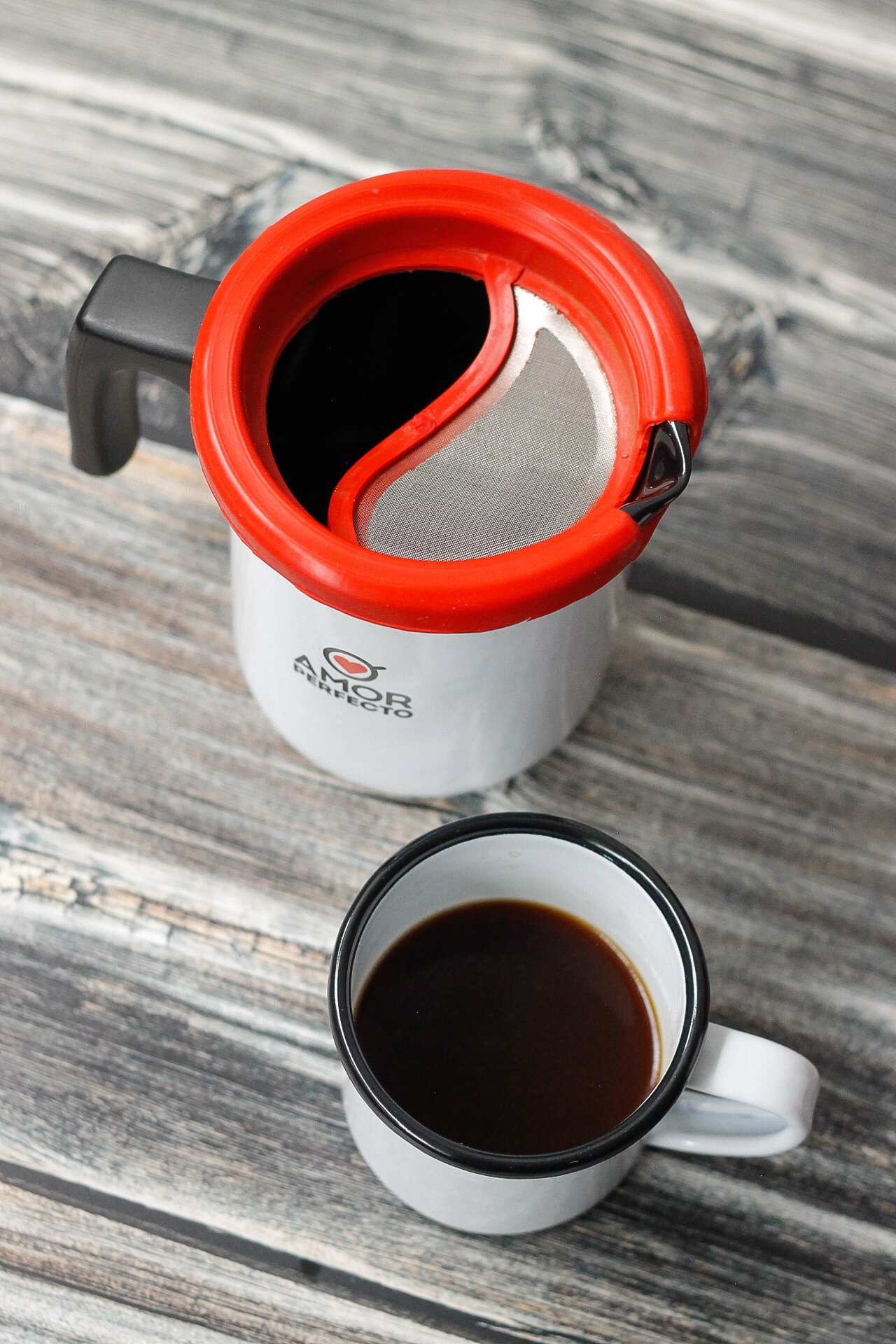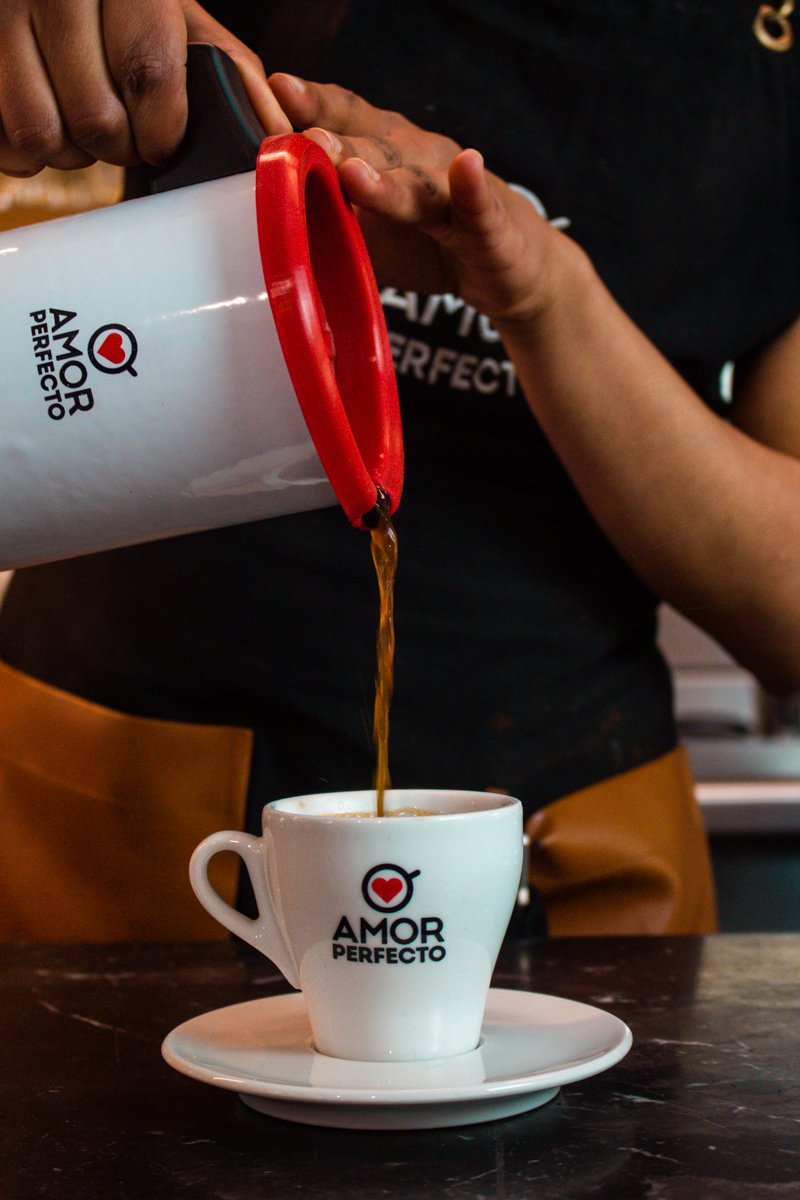Olla Cafetera | Filtered Coffee Pot
Innovakit and Amor Perfecto have co-developed the "Coffee Pot", a preparation method that rescues the best of Colombian traditional knowledge to achieve the preparation of specialty coffee, in an easy, affordable way and without specialized knowledge, obtaining interesting, sweeter, and more aromatic coffees.
Since the middle of 2020, producers, marketers, and specialized coffee shops have been experiencing a severe setback in their businesses because of the pandemic. Many have launched intense campaigns on social networks to rescue customers, under the premise of improving the user's skills when preparing coffee, as a strategy to reactivate sales, reduce losses and maintain jobs.
They flooded social networks like Facebook, Instagram, WhatsApp and Twitter with offers that included, apart from bags of coffee, all the new preparation methods available on the market: the V60 drip coffee maker, the Chemex carafe, the Aeropress plunger coffee maker, the Coffee siphon, and a wide range of new versions.
To familiarize customers with these artifacts, they broadcast live classes and workshops day and night. Some have even offered to send home baristas to help them improve their techniques. Most consumers concluded that, to fulfill that dream, they needed to acquire manual or electric grinders, precision scales, timers, paper or metal filters, and other suitable tools for the service. All this to make a simple cup of coffee.
The Amor Perfecto team, led by businessman Luis Fernando Vélez, even launched an unusual Aeropress home contest, but the response was not as expected. First, because this gadget is around 200,000 pesos per unit, and second, because the participants feared failing in the attempt. So that was not good news for Amor Perfecto, which needed to mitigate the closures of restaurants, cafes, hotels, and airports, caused by the pandemic, and which erased its main source of income with a stroke of the pen. “We are left with no options to keep the company afloat,” says Vélez.
The group began to review studies on consumer preferences in Colombia and discovered that eighty percent of the population still prepared coffee in a pot.
Brattås told Vélez that it was the Tias Kettle, used to prepare KokeKaffe (permeated coffee), a simple method to use, efficient in its results and, above all, cheap. In other words, just what the battered sector of specialty coffees and, of course, Perfect Love required at that time. Vélez called Hugo López, from Innovakit, his technical and scientific adviser, and told him: "Hugo, let's rethink the Colombian pot." And that was how, in record time, López prepared a 3D design. After certain modifications, both concluded: "That's it, that's it."
The Vélez y López pot, made of pewter, has just hit the market. Its production is in charge of Macuira, recognized manufacturer of crockery and utensils in said material. Marcelo Echeverry, an industrialist from Caldas, oversaw the silicone lid, with its respective integrated filter. After intense days of trial and error, the team noticed excellent results in the cup profiles.
Without wasting time, Vélez and his staff then ventured to launch a coffee contest in that type of container and the response left them stunned.
Vélez, a graduate of the Universidad de los Andes, called Andrés González, director of the chemical engineering department, and asked him to carry out all possible tests with the new device. The first conclusion was overwhelming: the pot allowed an infusion from free particles instead of trapped or compacted molecules, as occurs with filter systems. And that particularity was already an advance. In addition, preparing coffee in a pot does not require specialized knowledge, since, with basic notions about the relationship between coffee and water, it is easy to find optimal olfactory and taste profiles. Compared to other utensils, the pot opens the possibility of making the consumer feel more comfortable and facilitating the search for their favorite recipe. And all this with a small investment.



